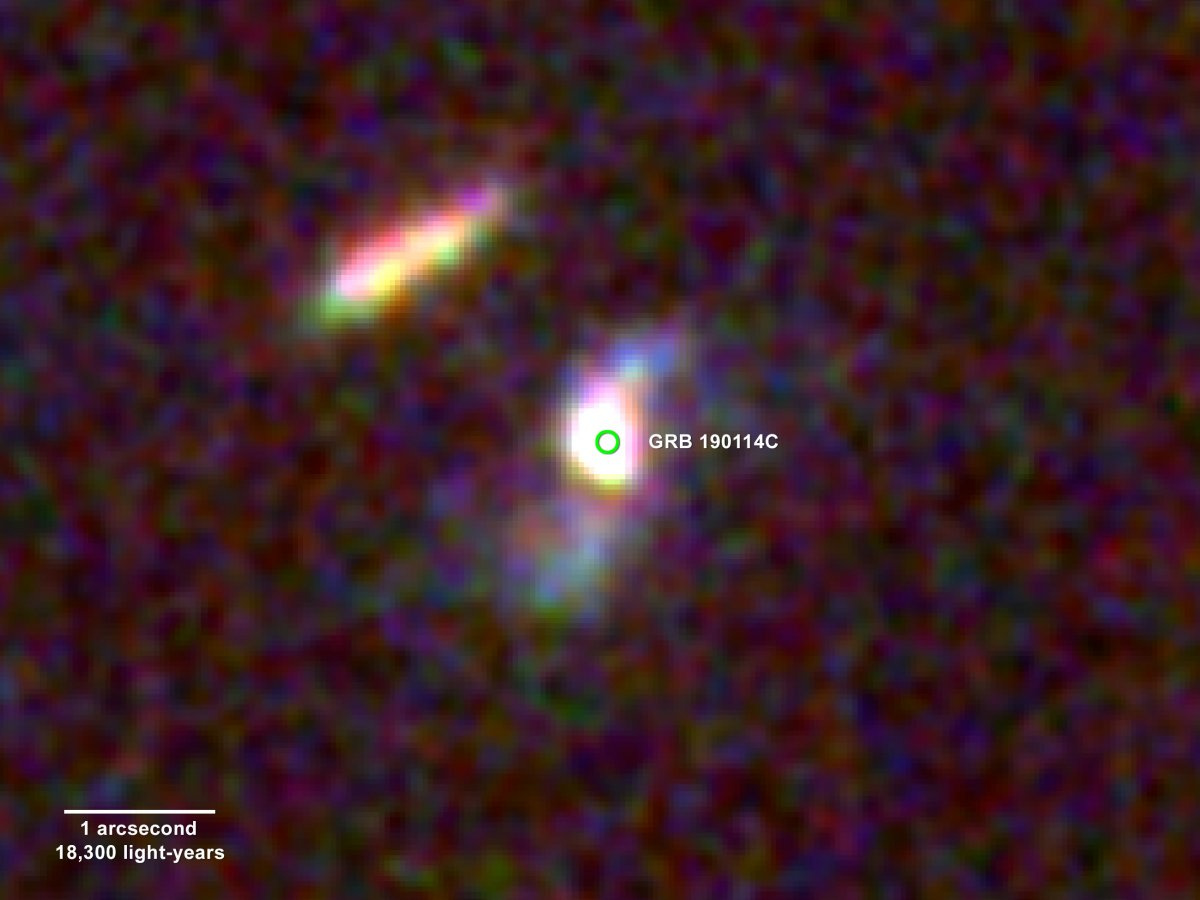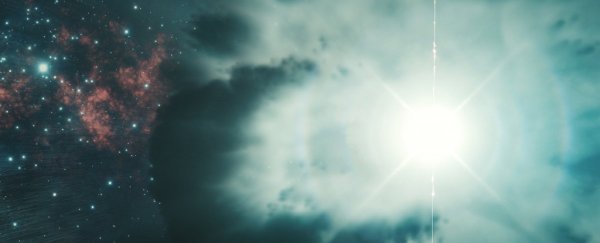Two violent explosions in galaxies billions of light-years away recently produced the brightest light in the Universe. Scientists caught it in action for the first time.
The explosions were gamma-ray bursts: short eruptions of the most energetic form of light in the Universe.
Telescopes caught the first burst in July 2018. The second burst, captured in January, produced light containing about 100 billion times as much energy as the light that's visible to our human eyes.
Gamma-ray bursts appear without warning and only last a few seconds, so astronomers had to move quickly. Just 50 seconds after satellites spotted the January explosion, telescopes on Earth swivelled to catch a flood of thousands of particles of light.
"These are by far the highest-energy photons ever discovered from a gamma-ray burst," Elisa Bernardini, a gamma-ray scientist, said in a press release.
Over 300 scientists around the world studied the results; their work was published Wednesday in the journal Nature.
 (NASA/ESA/V. Acciari et al., Nature, 2019)
(NASA/ESA/V. Acciari et al., Nature, 2019)
Gamma-ray bursts happen almost every day, without warning, and they only last a few seconds. Yet the high-energy explosions remain something of a mystery to scientists.
Astronomers think they come from colliding neutron stars or from supernovae – events in which stars run out of fuel, give in to their own gravity, and collapse into black holes.
"Gamma-ray bursts are the most powerful explosions known in the Universe and typically release more energy in just a few seconds than our Sun during its entire lifetime," gamma-ray scientist David Berge said in the release.
"They can shine through almost the entire visible Universe."
After the brief, intense eruptions of gamma rays, hours or days of afterglow follow.
Telescopes have observed low-energy rays that come from the initial explosion and the afterglow.
"Much of what we've learned about GRBs [gamma-ray bursts] over the past couple of decades has come from observing their afterglows at lower energies," NASA scientist Elizabeth Hays said in a release.
But scientists had never caught the ultra-high-energy light until these two recent observations.
On January 14, two NASA satellites detected an explosions in a galaxy over 4 billion light-years away. Within 22 seconds, these space telescopes – the Neil Gehrels Swift Observatory and the Fermi Gamma-ray Space Telescope – beamed the coordinates of the burst to astronomers all over Earth.
Within 27 seconds of receiving the coordinates, astronomers in the Canary Islands turned two Major Atmospheric Gamma Imaging Cherenkov (MAGIC) telescopes toward that exact point in the sky.
The photons flooded those telescopes for the next 20 minutes, leading to new revelations about some of the most elusive properties of gamma-ray bursts.
"It turns out we were missing approximately half of their energy budget until now," Konstancja Satalecka, a scientist who coordinates MAGIC's searches for gamma-ray bursts, said in the release.
"Our measurements show that the energy released in very-high-energy gamma-rays is comparable to the amount radiated at all lower energies taken together. That is remarkable."
The photons detected from a gamma-ray burst six months earlier, in July 2018, weren't as energetic or as numerous as those from the January explosion.
But the earlier detection was still notable because the flow of high-energy light came 10 hours after the initial explosion. The light lasted for another two hours – deep into the afterglow phase.
In their paper, the researchers suggested that electrons may have scattered the photons, increasing the photons' energy. Another paper about the January observations suggested the same thing.
Scientists had long suspected that this scattering was one way gamma-ray bursts could produce so much ultra-high-energy light in the afterglow phase. The observations of these two bursts confirmed that for the first time.
Scientists expect to learn more as they turn telescopes toward more gamma-ray bursts like these in the future.
"Thanks to these new ground-based detections, we're seeing the gamma rays from gamma-ray bursts in a whole new way," Hays said.
This article was originally published by Business Insider.
More from Business Insider:
